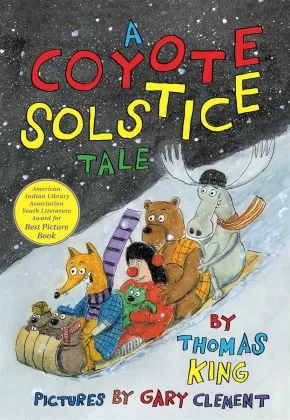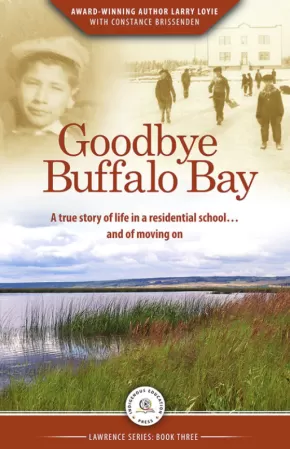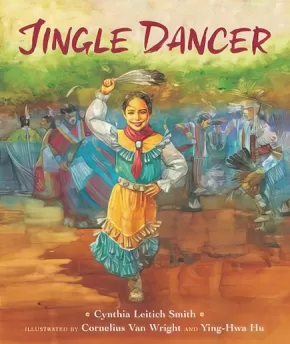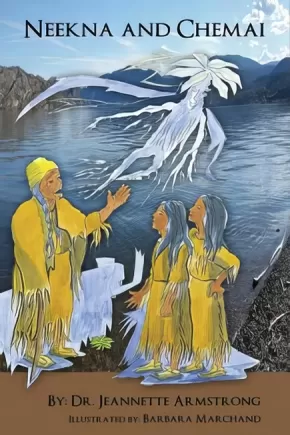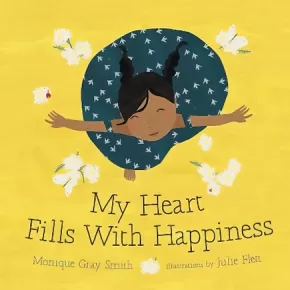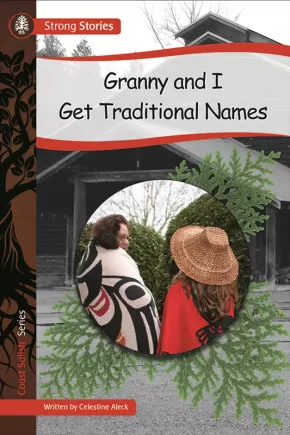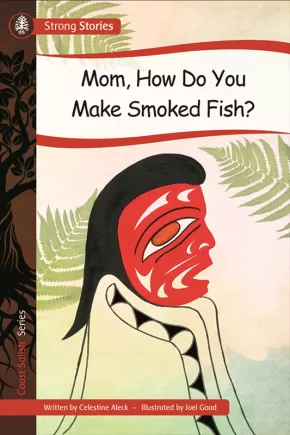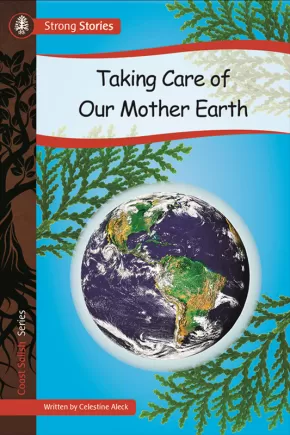
Authentic First Peoples Resources K - 9 2016
1
-
15
of
102 Results;
Sort By
Go To
of 7
Published by FNESC and FNSA, 2016 (2nd edition). 136 pages. For ordering hard copies ($15.00 per guide), please visit FNESC's ordering page.
The annotated listings provided in this guide identify currently available authentic First Peoples texts that students can work with to meet provincial standards related to literacy as well as a variety of specific subject areas.
The guide is intended to help BC educators introduce resources that reflect First Peoples knowledge and perspectives into classrooms in respective ways. The inclusion of authentic First Peoples content into classrooms supports all students in developing an understanding of the significant place of First Peoples within the historical and contemporary fabric of this province and provides culturally relevant materials for Indigenous learners in British Columbia.
This guide lists resources (story and informational text) written for a student audience.
A Blanket of Butterflies - 2nd Edition
$21.95
Artists:
Format:
Paperback
Text Content Territories:
Indigenous Canadian; First Nations; Dene; Tlicho (Dogrib);
ISBN / Barcode: 9781774920404
Synopsis:
Synopsis:
No one knows how a suit of samurai armour ended up in the Fort Smith museum. When a mysterious stranger turns up to claim it, Sonny, a young Tłı̨chǫ Dene boy, is eager to help.
Shinobu has travelled to Fort Smith, NWT, to reclaim his grandfather’s samurai sword and armour. But when he discovers that the sword was lost in a poker game, he must confront the man known as Benny the Bank. Along the way, Shinobu must rely on unlikely heroes—Sonny, his grandmother, and a visitor from the spirit world. Together, they face Benny and his men, including the giant they call Flinch.
Will Shinobu be able to regain the lost sword and, with it, his family’s honour? Can Sonny and his grandmother help Shinobu while keeping the peace in their community?
Now in full colour, this new edition includes additional background information and cultural context. Learn about the real-life inspiration behind the story and the intersections between Indigenous and Japanese Canadian experiences during the Second World War.
Educator & Series Information
This work is part of the Debwe Series, which is created in the spirit of the Anishinaabe concept debwe (to speak the truth), The Debwe Series is a collection of exceptional Indigenous writings from across Canada.
This book is part of the The Spirit of Denendeh series.
The publisher recommends this title for ages 15 to 18.
Additional Information
56 pages | 6.50" x 10.00" | 2nd Edition | Paperback
A Coyote Solstice Tale (PB)
$12.99
Artists:
Format:
Paperback
Text Content Territories:
Indigenous;
ISBN / Barcode: 9781773069128
Synopsis:
Synopsis:
Trickster Coyote is having his friends over for a festive solstice get-together in the woods when a little girl comes by unexpectedly. She leads the party-goers through the snowy woods to a shopping mall -- a place they have never seen before.
Coyote gleefully shops with abandon, only to discover that filling your shopping cart with goodies is not quite the same thing as actually paying for them. The trickster is tricked and goes back to his cabin in the woods -- somewhat subdued -- though nothing can keep Coyote down for long.
Awards
- Winner of the American Indian Library Association Youth Literature Awards, Best Picture Book
Reviews
"The humor is dry and affectionate, the rhyming text delights with sly turns of phrase, the watercolor cartoons are whimsical … [A] holiday treat." — School Library Journal
"This witty winter tale deftly skewers the materialistic aspect of the holiday season in a humorous, trenchant way." — Kirkus Reviews
Educator Information
Recommended Ages: 5 - 8.
Curriculum Connections: Social Studies, Geography, Physical Education and Health, Science.
Correlates to the Common Core State Standards in English Language Arts:
CCSS.ELA-LITERACY.RL.2.4
Describe how words and phrases (e.g., regular beats, alliteration, rhymes, repeated lines) supply rhythm and meaning in a story, poem, or song.
Additional Information
64 pages | 5.25" x 7.75" | Paperback
Goodbye Buffalo Bay
$19.99
Format:
Paperback
Text Content Territories:
Indigenous Canadian; First Nations; Cree (Nehiyawak);
ISBN / Barcode: 9781990297274
Synopsis:
Synopsis:
A true story of life in a residential school and of moving on. Written by Award-Winning Cree author Larry Loyie with Constance Brissenden.
Goodbye Buffalo Bay is set during the author's teenage years. In his last year in residential school, Lawrence learns the power of courage to stand up for his beliefs. When he returns home he feels like a stranger to his family. The traditional First Nations life he once knew has changed. With Grandfather's guidance he finds his way. A book of self-discovery and the importance of friendship.
Educator & Series Information
This book is part of The Lawrence Series.
Recommended for grades 4 to 9.
Additional Information
142 Pages | Paperback
My Name is Seepeetza: 30th Anniversary Edition
$12.99
Format:
Paperback
Text Content Territories:
Indigenous Canadian; First Nations; Salish; Interior Salish; Nlaka'pamux (Thompson);
ISBN / Barcode: 9781773068565
Synopsis:
Synopsis:
An honest look at life in an Indian residential school in the 1950s, and how one indomitable young spirit survived it — 30th anniversary edition.
Seepeetza loves living on Joyaska Ranch with her family. But when she is six years old, she is driven to the town of Kalamak, in the interior of British Columbia. Seepeetza will spend the next several years of her life at an Indian residential school. The nuns call her Martha and cut her hair. Worst of all, she is forbidden to “talk Indian,” even with her sisters and cousins.
Still, Seepeetza looks for bright spots — the cookie she receives at Halloween, the dance practices. Most of all, there are her memories of holidays back at the ranch — camping trips, horseback riding, picking berries and cleaning fish with her mother, aunt and grandmother. Always, thoughts of home make school life bearable.
Based on her own experiences at the Kamloops Indian Residential School, this powerful novel by Nlaka’pamux author Shirley Sterling is a moving account of one of the most blatant expressions of racism in the history of Canada.
Includes a new afterword by acclaimed Cree author Tomson Highway of the Barren Lands First Nation in northern Manitoba.
Educator Information
Recommended for ages 9 to 12.
Key Text Features: afterword, dialogue, journal entries, maps.
Correlates to the Common Core State Standards in English Language Arts:
CCSS.ELA-LITERACY.RL.4.2
Determine a theme of a story, drama, or poem from details in the text; summarize the text.
CCSS.ELA-LITERACY.RL.5.1
Quote accurately from a text when explaining what the text says explicitly and when drawing inferences from the text.
CCSS.ELA-LITERACY.RL.6.6
Explain how an author develops the point of view of the narrator or speaker in a text.
Includes a new afterword by acclaimed Cree author Tomson Highway of the Barren Lands First Nation in northern Manitoba.
Additional Information
128 pages | 5.10" x 7.50"
Jingle Dancer (PB)
$12.50
Artists:
Format:
Paperback
Text Content Territories:
Indigenous American; Native American; Muscogee (Creek);
ISBN / Barcode: 9780063018112
Synopsis:
Synopsis:
The affirming story of how a contemporary Native American girl turns to her family and community to help her dance find a voice.
Jenna, a contemporary Muscogee (Creek) girl, loves the tradition of jingle dancing that has been shared by generations of women in her family, and she hopes to dance at the next powwow. But she has a problem—how will her dress sing if it has no jingles?
The cone-shaped jingles sewn to Grandma Wolfe's dress sing tink, tink, tink, tink.
Jenna's heart beats to the brum, brum, brum, brum of the powwow drum as she daydreams about the clinking song of her grandma's jingle dancing.
The warm, evocative watercolors of Cornelius Van Wright and Ying-Hwa Hu complement author Cynthia Leitich Smith's lyrical text in this picture book. Perfect for classroom and library sharing.
Educator Information
Suggested Ages: 4-8.
Additional Information
32 pages | 9.25" x 11.00" | Paperback
Missing Nimâmâ
$8.99
Artists:
Format:
Hardcover
Text Content Territories:
Indigenous Canadian; First Nations; Cree (Nehiyawak);
ISBN / Barcode: 9781039708181
Synopsis:
Synopsis:
A beautiful, transcendent story of a mother-daughter connection that persists through tragedy and across time.
Kateri is a young Cree girl, growing up in the care of her grandmother. We see her reaching important milestones: her first day of school, first dance, first date, wedding, first child. Her mother is absent, but not gone, watching her child growing up without her.
Told in alternating voices of child and mother, Missing Nimâmâ is a story of love, loss, and acceptance, showing the human side of a national tragedy. Dreamlike illustrations by François Thisdale enrich Kateri’s emotional journey. An afterword by the author provides a simple, age-appropriate context for young readers. Includes Cree words and glossary.
Reviews
"A free-verse intergenerational story of separation, loss, and daughter-mother connection amid the ongoing crisis of missing First Nations girls and women. . . On each page, Cree author Florence presents two narratives: Kateri's and her missing nimâmâ's. By juxtaposing the daughter's and mother's thoughts and feelings in complementary verse, Florence provides them the opportunity to experience life together from their respective points of view and to talk to each other from a distance. Thisdale's soft-edged, wistful artwork enriches the heartfelt story, strongly capturing the passage of time and Kateri's emotional journey. An afterword is appended, offering simple and relevant information as well as statistics of missing and murdered indigenous girls and women; together with the story, it should help to begin a conversation with young readers. A solid debut picture book that works as a record of voices that are usually unheard, ignored, and forgotten." — Kirkus Reviews
"A touching story related from the point of view of a missing indigenous woman as she watches her daughter grow up without her."— Quill and Quire
Awards
- TD Canadian Children's Literature Award Winner
Educator Information
This is a picture book best suited for more mature readers, as it deals with mature themes and subject matter. It's best used for a read-aloud due to its subject matter and theme of loss. This book is not recommended as an independent read for younger ages.
Additional Information
32 pages | 8.50" x 11.00"
Fatty Legs: A True Story (10th Anniversary Edition) (PB)
$15.95
Artists:
Format:
Paperback
Text Content Territories:
Indigenous Canadian; Inuit; Inuvialuit (Mackenzie Inuit);
ISBN / Barcode: 9781773213507
Synopsis:
Synopsis:
The beloved story of an Inuvialuit girl standing up to the bullies of residential school, updated for a new generation of readers.
Margaret Olemaun Pokiak-Fenton’s powerful story of residential school in the far North has been reissued to commemorate the memoir’s 10th anniversary with updates to the text, reflections on the book’s impact, and a bonus chapter from the acclaimed follow-up, A Stranger at Home. New content includes a foreword from Dr. Debbie Reese, noted Indigenous scholar and founder of American Indians in Children’s Literature, while Christy Jordan-Fenton, mother of Margaret’s grandchildren and a key player in helping Margaret share her stories, discusses the impact of the book in a new preface.
With important updates since it first hit the shelves a decade ago, this new edition of Fatty Legs will continue to resonate with readers young and old.
Reviews
"I highly recommend this book for the discussion it would stir with students...Makes the harrowing residential school stories accessible to youth." — Resource Links
"Presents a unique and enlightening glimpse into the residential school experience and, most importantly, one little girl's triumph over her oppressors." — Quill & Quire
"Fatty Legs is a memoir written to introduce children to the reality of the residential school system and the focus on assimilating Indigenous peoples. The story documents the journey of a young girl who wanted to go to school to learn to read and her realization that school wasn’t what she imagined it to be." — The Dalai Lama Center
Educator Information
Themes: biography; Inuit; Indigenous peoples; Indigenous; arctic; school; self-esteem; abuse; community; prejudice; Canadian content; courage/bravery; right vs. wrong; role reversal; secrets; society; history; bullying; memoir; character education.
This resource is also available in French: Les bas du pensionnat
This resource is also available in its original format: Fatty Legs: A True Story
Additional Information
| 156 pages | 6.50" x 9.00" |
Authenticity Note
This illustrator of this book is not Indigenous; therefore, her artwork is not considered to be Authentic Indigenous Artwork according to Strong Nations Authenticity Guidelines. The archival photos from Margaret Pokiak-Fenton's personal collection, however, are considered to be authentic, which is why the book is labelled as containing Authentic Indigenous Artwork. It is up to readers to determine whether or not the images in this work are authentic for their purposes.
Neekna and Chemai
$16.95
Artists:
Format:
Paperback
Text Content Territories:
Indigenous Canadian; First Nations; Salish; Interior Salish; Syilx (Okanagan);
ISBN / Barcode: 9781926886435
Synopsis:
Synopsis:
Neekna and Chemai are two little girls growing up in the Okanagan Valley in the time before European contact. Through these two friends, we learn about the seasonal life patterns of the Okanagan First Peoples. The girls spend time with Great-Grandmother, who tells them about important ceremonies, and they gather plants with Neekna's grandmother. Grandmother explains how bitterroot came to be an important food source, and why the people give a special ceremony of thanks at its harvest. Grandmother also tells the story of how a woman was changed to a rock to watch over the Okanagan Valley. Neekna understands how important it is that she has received the knowledge passed down for generations, from great-grandmother to grandmother to mother.
Educator Information
Recommended in the Canadian Indigenous Books for Schools 2019-2020 resource list as being useful for grades 2-7 in these subject areas: Career Education, English Language Arts, Social Studies.
Key Points:
- Learn about the seasonal life patterns of the Okanagan people.
- Armstrong's main goal in writing is to educate young people about Indigenous culture and history.
- Both educator and protector, Jeannette Armstrong is a professor of Indigenous Studies and a Canada Research Chair in Indigenous Philosophy. Her research into Indigenous philosophies and Okanagan Syilx thought and environmental ethics that are coded into Syilx literature has been recognized locally and globally, and she serves as an active member of the Okanagan Nation Alliance and the En’owkin Centre.
Additional Information
52 pages | 5.00" x 7.00" | 3rd Edition
I Can't Have Bannock But The Beaver Has A Dam
$12.00
Artists:
Format:
Paperback
Text Content Territories:
Indigenous Canadian;
ISBN / Barcode: 9781553796626
Synopsis:
Synopsis:
A boy patiently listens to his mother's reasons for not making bannock-all the result of a beaver's need to make a dam.
Includes a bannock recipe!
Reviews
"I Can't Have Bannock But the Beaver Has a Dam is written in prose. It begins with a little boy asking his mother if he can have some bannock. She says no and tells him why. As for all little boys, mother's answer only offers material for another question. So the book's story is built on this question-answer exchange between the two. Each time the mother answers, she gives all of the information in the previous answer plus a new piece of information, so we see the picture expanding for the boy. The book would be a good teaching tool for the elementary teacher, especially for those in native and northern communities where bannock and power failures are a part of everyday life. It is recommended for all elementary school libraries." - Sharon A. McLennan McCue, CM Magazine
Educator Information
Recommended Grades: K-3
Additional Information
32 pages | 9.00" x 11.00" | New Edition
I Know I Am Precious and Sacred
$12.00
Format:
Paperback
Text Content Territories:
Indigenous Canadian;
ISBN / Barcode: 9780992151645
Synopsis:
Synopsis:
I Know I Am Precious and Sacred follows a conversation between a child and loving grandfather as they talk about what the words “precious” and “sacred” mean. These culturally integral concepts are explained in simple, practical terms, so that Little Ones may recognize how they affect relationships in families and communities. Readers and listeners are invited to explore how these ancestral teachings impact their families and communities.
I Know I Am Precious And Sacred is a soft-cover children’s book, geared towards readers and listeners ages 5 to 10 years old, but holds out important truths for their adults as well.
Educator & Series Information
This is the second book in the Precious and Sacred series.
Reading level: K-3.
Additional Information
32 pages | 8.00" x 8.00"
Authenticity Note: This book has received an Authentic Text label because it was written by Debora Abood with the support and participation of Elders from the Victoria Native Friendship Centre.
My Heart Fills with Happiness (BB)
$12.95
Artists:
Format:
Board Book
Text Content Territories:
Indigenous Canadian;
ISBN / Barcode: 9781459809574
Synopsis:
Synopsis:
The sun on your face. The smell of warm bannock baking in the oven. Holding the hand of someone you love. What fills your heart with happiness? This beautiful board book, with illustrations from celebrated artist Julie Flett, serves as a reminder for little ones and adults alike to reflect on and cherish the moments in life that bring us joy.
International speaker and award-winning author Monique Gray Smith wrote My Heart Fills with Happiness to support the wellness of Indigenous children and families, and to encourage young children to reflect on what makes them happy.
Awards
- 2017 Christie Harris Illustrated Children's Literature Prize winner
Reviews
"A quiet loveliness, sense of gratitude, and—yes—happiness emanate from this tender celebration of simple pleasures, which features a cast of First Nations children and adults...Short, first-person phrases...revel in both solitary and familial activities...Flett’s crisp-edged paintings blend universal and culturally specific experiences." — Publishers Weekly, Starred, November 2015
"Joyful and tender, this board book celebrates the activities that bring gladness through family and cultural connections...Flett’s quietly powerful gouache and digital collage illustrations emphasize the relationships between people...The sweet family story has universal appeal. A first purchase for all libraries." — School Library Journal, Starred, March 2016
"A celebration of aboriginal culture...but also universal in its message: sometimes it's the simplest things that lift our spirits highest...[The book] is beautiful in both its appearance and its intention." — Quill & Quire, March 2016
"My Heart Fills With Happiness is a story that focuses on supporting the wellness of Indigenous children and families, encouraging them to reflect on what makes them happy. The story looks at happy memories that readers can connect to and serves as a reminder to reflect and cherish the moments in life that bring us joy." — The Dalai Lama Center
Educator Information
This book is also available in French: J'ai le coeur rempli de bonheur.
This book is also available in English and Plains Cree: My Heart Fills With Happiness / Ni Sâkaskineh Mîyawâten Niteh Ohcih
This book is also available in English and Anishinaabemowin: My Heart Fills With Happiness / Nijiikendam
Additional Information
24 pages | 7.00" x 7.00"
Strong Stories Coast Salish: Granny and I Get Traditional Names
 $9.95
$9.95

Format:
Paperback
Text Content Territories:
Indigenous American; Native American; Salish; Coast Salish; Indigenous Canadian; First Nations; Salish; Coast Salish;
ISBN / Barcode: 9781771741279
Synopsis:
Synopsis:
In this Coast Salish story, told in the voice of a young girl, she describes how she and her Granny get ready for their naming ceremony. When the special day arrives, the Longhouse fills with people who will witness and celebrate the sharing of their traditional names.
Educator & Series Information
This book is part of the Strong Stories: Coast Salish series. Strong Stories focus on different First Nation territories from across Canada and the United States. These stories reflect the belief that our stories are the roots of our people, our lands and our cultures. It is from our stories that we grow and become strong and proud.
This resource is also available in French: Grand-maman et moi recevons des noms traditionnels.
Additional Information
16 pages | 6.00" x 9.00" | ISBN: 9781771741279
Strong Stories Coast Salish: Mom, How Do You Make Smoked Fish?
 $9.95
$9.95

Artists:
Format:
Paperback
Text Content Territories:
Indigenous Canadian; First Nations; Salish; Coast Salish; Indigenous American; Native American; Salish; Coast Salish;
ISBN / Barcode: 9781771741224
Synopsis:
Synopsis:
In this Coast Salish story, step-by-step instructions for gathering wood and catching, filleting and then smoking fish are given. The text and illustrations support the reader’s understanding of the process and emphasize the respect shown by the Coast Salish people for the circle of life.
Educator & Series Information
This book is part of the Strong Stories: Coast Salish series. Strong Stories focus on different First Nation territories from across Canada and the United States. These stories reflect the belief that our stories are the roots of our people, our lands and our cultures. It is from our stories that we grow and become strong and proud.
This resource is also available in French: Maman, comment fait-on du poisson fumé ?
Additional Information
16 pages | 6.00" x 9.00" | ISBN: 9781771741224
Strong Stories Coast Salish: Taking Care of Our Mother Earth
 $9.95
$9.95

Format:
Paperback
Text Content Territories:
Indigenous Canadian; First Nations; Salish; Coast Salish; Indigenous American; Native American; Salish; Coast Salish;
ISBN / Barcode: 9781771741286
Synopsis:
Synopsis:
In this Coast Salish story, it is explained how each family played a traditional role in taking care of our Mother Earth. From controlled burning to ethical hunting and fishing practices, the Coast Salish people were, and still are, taught by their elders to respect Mother Earth.
Educator & Series Information
Taking Care of Our Mother Earth is part of the Strong Stories: Coast Salish series. Strong Stories focus on different First Nation territories from across Canada and the United States. These stories reflect the belief that our stories are the roots of our people, our lands and our cultures. It is from our stories that we grow and become strong and proud.
This resource is also available in French: Prendre soin de notre Terre-Mère.
Additional Information
16 pages | 6.00" x 9.00" | ISBN: 9781771741286
Strong Stories Coast Salish: The Cedar Tree: The Heart of Our People
 $9.95
$9.95

Format:
Paperback
Text Content Territories:
Indigenous American; Native American; Salish; Coast Salish; Indigenous Canadian; First Nations; Salish; Coast Salish;
ISBN / Barcode: 9781771741293
Synopsis:
Synopsis:
In this Coast Salish story, learn about the importance of the cedar tree to the culture and history of the Coast Salish people. Descriptions of items made from the wood and bark of this special tree are included. Also explained in the story is the protocol for harvesting cedar bark.
Educator & Series Information
The Cedar Tree: The Heart of Our People is part of the Strong Stories: Coast Salish series. Strong Stories focus on different First Nation territories from across Canada and the United States. These stories reflect the belief that our stories are the roots of our people, our lands and our cultures. It is from our stories that we grow and become strong and proud.
This resource is also available in French: Le Cèdre, le coeur de notre peuple.
Additional Information
16 pages | 6.00" x 9.00" | ISBN: 9781771741293
Sort By
Go To
of 7




